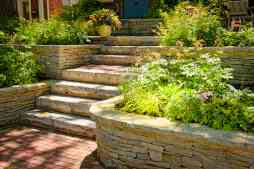Seasonal Tips for Fall Vegetable and Bulb Planting to Maximize Your Harvest

Fall is an ideal time to plant certain vegetables and bulbs, allowing you to enjoy a bountiful harvest in the coming months. With cooler temperatures and increased rainfall, your garden can thrive with the right planning and care. This guide will walk you through essential tips for planting vegetables and bulbs during the fall season to help you maximize your gardening success.
Understanding the Benefits of Fall Planting
Planting in the fall offers several advantages, including reduced pest pressure, cooler weather that promotes root development, and often more consistent rainfall which reduces watering needs. Many vegetable varieties establish strong root systems before winter dormancy, leading to earlier and more robust growth in spring. Similarly, fall-planted bulbs have time to develop roots underground before sprouting beautiful blooms next season.
Choosing the Right Vegetables for Fall Planting
Not all vegetables are suited for fall planting. Cool-season crops such as kale, spinach, radishes, carrots, broccoli, cauliflower, and Brussels sprouts thrive when planted in fall because they tolerate frost and cooler temperatures well. It’s important to choose varieties labeled as suitable for fall or winter harvests in your region. Starting these plants at the right time ensures they mature properly before cold weather sets in.
Selecting Bulbs Ideal for Autumn Planting
Fall is prime time for planting spring-blooming bulbs like tulips, daffodils, crocuses, hyacinths, and alliums. These bulbs require a chilling period over winter to bloom beautifully come springtime. When selecting bulbs at your local garden center or nursery, choose firm bulbs without signs of mold or damage. Plant them at recommended depths with good soil drainage to promote healthy root growth.
Soil Preparation Tips for Successful Fall Plantings
Preparing your soil correctly can make all the difference when planting in fall. Start by clearing away summer debris like spent plants or weeds that could harbor pests or diseases. Loosen compacted soil by tilling gently; add organic matter such as compost or well-aged manure to improve fertility and drainage. Testing soil pH may also be beneficial since many vegetables prefer slightly acidic conditions between 6.0-7.0 pH levels.
Maintenance Practices After Planting
After planting your vegetables or bulbs in fall beds, regular maintenance will ensure healthy growth through autumn into early winter. Mulch around plants using straw or shredded leaves helps conserve moisture while insulating roots from temperature fluctuations. Monitor moisture levels closely—while rainfall may increase during this season it’d be best not to let soil dry out completely nor become waterlogged due to excessive rain.
By following these seasonal tips on choosing appropriate plants and preparing your garden properly this autumn season,you’ll set yourself up perfectly for a vibrant vegetable harvest along with stunning bulb blooms come springtime. Embrace fall gardening traditions today —your future self (and plate) will thank you.
This text was generated using a large language model, and select text has been reviewed and moderated for purposes such as readability.











